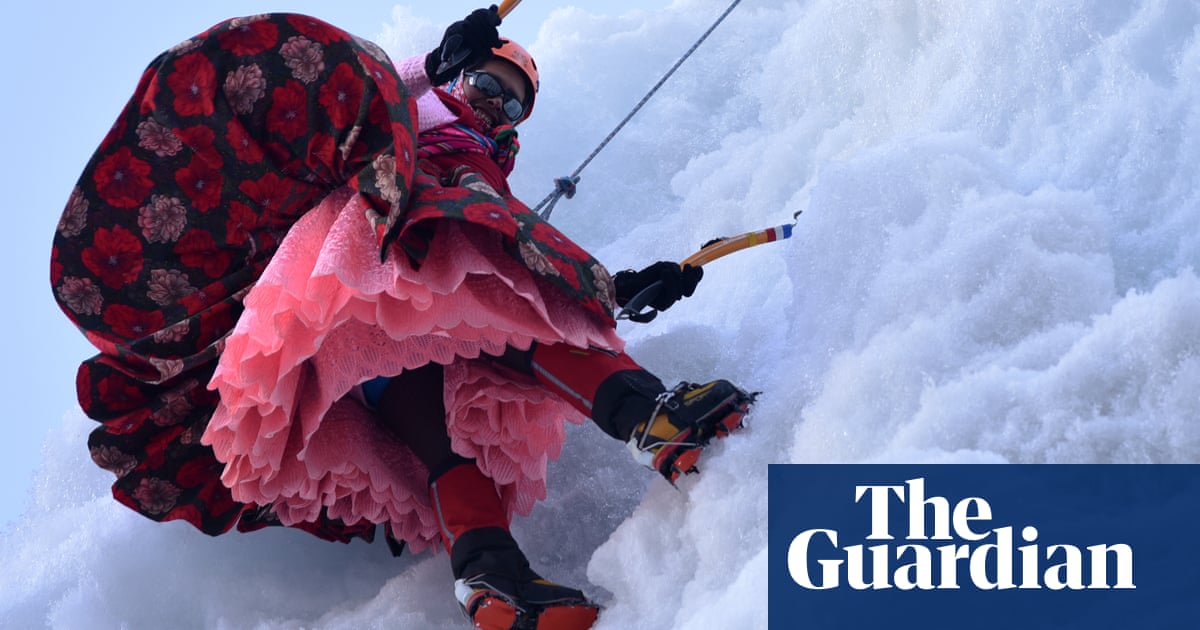Llusco, 39, is one of about 10 Indigenous female mountain guides in Bolivia. Her long black hair is tied in two plaits, linked with a large safety pin and wool decorations in red, yellow and green, the colours of the Bolivian flag. She is wearing a pollera, a voluminous floral skirt over layers of pink petticoats. She has paired it with a pink diamanté top, beneath a pink cardigan and a red fleece gilet. “I have never worn trousers to go up a mountain and I never will. Our polleras don’t impede us,” she says of the traditional Aymara garment.
She has been climbing Huayna Potosí for most of her life, but on 17 December 2015 she was part of a group of 11 women who made it to the summit. They called themselves the cholitas escaladoras (the climbing cholitas) and they made headlines when they scaled more peaks in the Cordillera Real. The word cholita comes from chola which was previously used as a pejorative term for indigenous Aymara women.
Huayna Potosí is one place she keeps returning to that fills her with joy. “I feel free, so happy, as if I’m escaping and the mountain is calling me. I’m also in love with nature,” she says. Minutes later, a condor, a national symbol of Bolivia and the largest bird of prey in the world, cruises overhead.



Interesting story. It sounds like it’s tough to be part of the indigenous population, and also tough to be a woman there.
Nice to see them persevering through all of that.